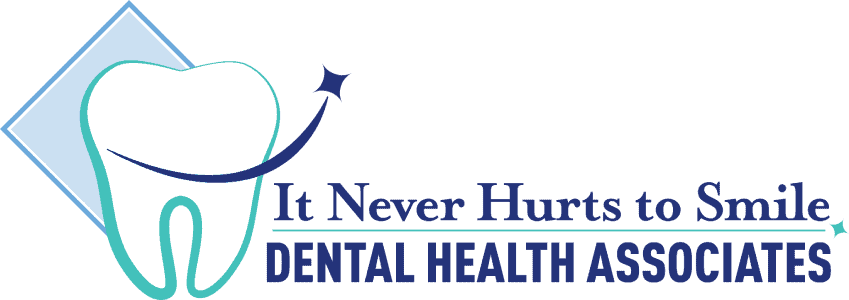Restorative Dentistry In Whitehouse, OH
Restorative dentistry is all about recovering what has been lost, as well as using advanced techniques to achieve dramatic improvement in the brilliance of your smile and health of your mouth.
Dentists trained in state-of-the-art restorative technologies have several fundamental goals: protect, preserve, maintain and retain. By protecting your teeth from damage and decay and your gums from inflammation, restorative dentists preserve a full mouth of healthy, natural teeth. By maintaining the integrity of teeth, roots and bone, restorative dentists work to ensure you will retain all of your teeth for a lifetime.
Restorative Options
Restorative dentists employ many advanced tools and techniques to meet these goals: Premier restorative dentists like Dr. Huntzinger applies porcelain veneers, composite veneers or dental bonding to improve the aesthetic appeal of teeth. They repair cracks and chips, fill gaps, perform root canals and seal off affected teeth with dental crowns. These ceramic protective caps are applied when teeth have been severely damaged, as when a major cavity was left untreated.
When teeth are missing, restorative dentists create bridges or dentures, or perform a dental implant procedure to restore integrity to the mouth and prevent remaining natural teeth from drifting.
Creating a comfortable, well-fitting bridge to replace missing teeth in your mouth is both art and science. This is also the case with complete dentures, the inexpensive option to replace a full set of natural teeth that have been lost, and fixed partial dentures or removable partial dentures.
Our dentists are skilled in every aspect of the dental implant process, from planning the best placement for your implants, to the implantation of the resilient titanium posts that act like the roots of your natural teeth, to fabrication of the artificial teeth that will be attached to the posts.
For advanced restorative cases, Dr. Huntzinger routinely works with other dental professionals in a comprehensive effort to improve the health and appeal of your mouth. Oral surgeons, periodontists, endodontists and orthodontists have training in very specific areas that may be relevant to your restoration plan.
Periodontal Treatment
Sometimes gum health is an overlooked aspect of your overall oral health. In truth, your gums are the foundation for secure teeth and a healthy, well-ordered mouth. Dental hygienists use deep cleaning techniques to clear bacteria from inflamed gum pockets, thereby protecting the roots and preserving the tooth’s secure connection to the bone of the jaw. This procedure is commonly known as scaling and root planing. It’s the best way to reverse periodontal disease and improve your odds of keeping all of your natural teeth for a lifetime.
Restorative Dentistry Treatments
Crowns

Dental crowns are caps placed over the top of teeth that have been weakened by decay or injury. They protect the tooth while ensuring that your bite remains forceful.
Dental Implants
A dental implant is a prosthetic tooth that has been surgically attached to the jawbone. It is arguably the strongest and most realistic-looking tooth replacement option available.
Bridges
A dental bridge fills in the gap left by missing teeth. Our dentists offer several types of dental bridges, with the most popular using a crown or crowns to secure the prosthetics to neighboring natural teeth.
Dentures
Dentures/partial dentures are removable prosthetic devices that complete the smile. Today’s dentures look hyper-realistic and fit more securely in your mouth.
Full Mouth Restoration
Full mouth restoration is a comprehensive dental plan that combines multiple restorative procedures to provide you with a complete and healthy smile once again.
Root Canal
When decay gets bad that a filling cannot adequately address the problem, your dentist may perform a root canal — which removes infected pulp and fills the tooth to prevent infection from coming back — to preserve the tooth.
Invisalign
Wearing clear aligners allows you to straighten your smile with an easier and usually shorter treatment than traditional orthodontics.
Braces
If your teeth have more significant alignment issues, your dentist may recommend the more traditional approach: braces.
TMJ Treatment
Chronic jaw pain can make everyday activities like eating and speaking more challenging. TMJ treatments include exercises, injections, oral appliances (worn at night), and, as a last resort, surgery.
To learn more about restorative dentistry, or to schedule an appointment, contact Dental Health Associates of Whitehouse today.
FAQ
At my age, I don’t need a brilliant smile, so why should I consider a full mouth restoration?
Full mouth restoration involves more than cosmetic procedures. It is a comprehensive approach to oral health that focuses on root causes, in every sense. Whether or not your ultimate goal is to achieve a million-dollar smile, by improving the health of your teeth and gums you will automatically boost the appeal of your smile — and with it, your confidence. With today’s advanced dental technology, there’s simply no reason to live with decaying, cracked or loose teeth; gums that are inflamed from periodontal disease; gaps in your mouth that are causing realignment of teeth; or attenuation of bone that is causing an unwelcome change in your facial profile.
These are not just aesthetic concerns, nor solely dental issues. Recent studies have demonstrated that poor oral health puts your overall health at risk. For example, bacteria that breed in safe havens below the gum line often migrate to other areas of the body. These bacterial infections have been linked to heart disease, strokes and gastrointestinal issues. By treating conditions such as gingivitis, harmful bacteria can be eliminated from inflamed gum pockets.
What makes a full mouth reconstruction necessary?
Sometimes it is the wear and tear of aging that makes a full mouth reconstruction necessary. Other times, the cause is years of neglect. Your own genes also play a role is how your teeth and gums change as you get older.
Those are root causes, but the specific reasons you will want to seek a full mouth reconstruction include pain, damaged teeth, inflamed gums, gaps in the mouth, changes in your bite or joints, chips or fractures, severe decay, loosening crowns or fillings, or sudden changes in the teeth, gums and other area of the mouth.
What is the first step for a full mouth restoration?
Essential first steps include evaluation and conversation. Dr. Huntzinger will check every aspect of your mouth to quantify the state of your oral health. Detailed X-rays will be taken, gum pockets measured, the integrity of roots and fillings tested, and the amount of decay and inflammation evaluated. Based on these findings, your dentist will discuss with you the goals you have for full mouth restoration, and outline practical ways to achieve these goals. Together you will create a plan that will chart your journey to optimal oral health. The entire process will typically take months and require myriad office visits, depending on the particular procedures that are chosen.
Why is gum restoration part of this comprehensive approach?
Red, sensitive, inflamed gums are an early indication that something has gone wrong in your mouth. Without healthy gums, it’s not possible to maintain a healthy mouth — or to retain a full set of teeth. When hardened plaque, known as tartar, builds up under the gum line, gum pockets increase in volume and become havens for bacterial growth. These sheltered microbial colonies begin to eat away at the roots of teeth and the surrounding bone. Eventually, the secure bond between roots and bone is broken, and teeth become loose in their sockets. As described above, the multiplication of bacteria beneath the gum line also has serious consequences for your overall health.


